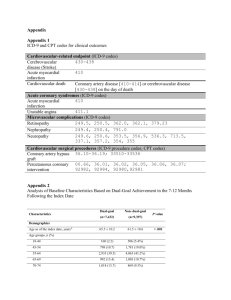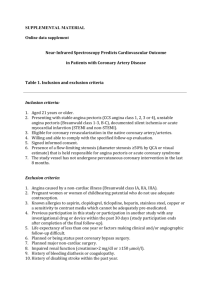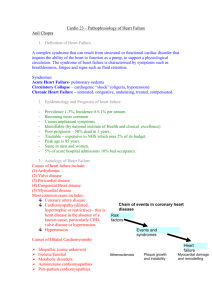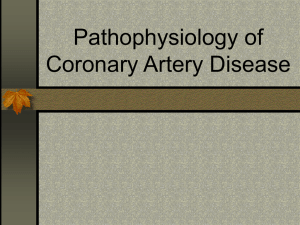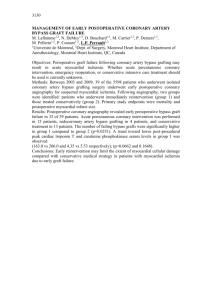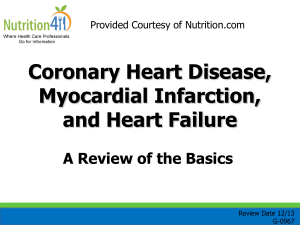Coronary heart disease among Icelandic men
advertisement
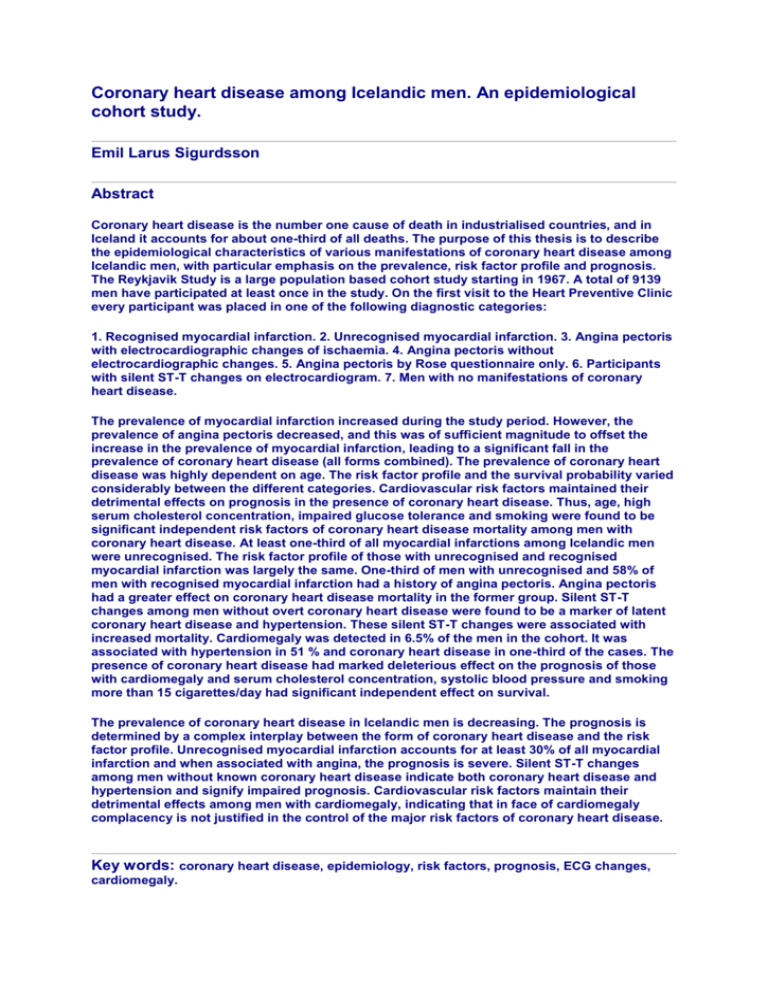
Coronary heart disease among Icelandic men. An epidemiological cohort study. Emil Larus Sigurdsson Abstract Coronary heart disease is the number one cause of death in industrialised countries, and in Iceland it accounts for about one-third of all deaths. The purpose of this thesis is to describe the epidemiological characteristics of various manifestations of coronary heart disease among Icelandic men, with particular emphasis on the prevalence, risk factor profile and prognosis. The Reykjavik Study is a large population based cohort study starting in 1967. A total of 9139 men have participated at least once in the study. On the first visit to the Heart Preventive Clinic every participant was placed in one of the following diagnostic categories: 1. Recognised myocardial infarction. 2. Unrecognised myocardial infarction. 3. Angina pectoris with electrocardiographic changes of ischaemia. 4. Angina pectoris without electrocardiographic changes. 5. Angina pectoris by Rose questionnaire only. 6. Participants with silent ST-T changes on electrocardiogram. 7. Men with no manifestations of coronary heart disease. The prevalence of myocardial infarction increased during the study period. However, the prevalence of angina pectoris decreased, and this was of sufficient magnitude to offset the increase in the prevalence of myocardial infarction, leading to a significant fall in the prevalence of coronary heart disease (all forms combined). The prevalence of coronary heart disease was highly dependent on age. The risk factor profile and the survival probability varied considerably between the different categories. Cardiovascular risk factors maintained their detrimental effects on prognosis in the presence of coronary heart disease. Thus, age, high serum cholesterol concentration, impaired glucose tolerance and smoking were found to be significant independent risk factors of coronary heart disease mortality among men with coronary heart disease. At least one-third of all myocardial infarctions among Icelandic men were unrecognised. The risk factor profile of those with unrecognised and recognised myocardial infarction was largely the same. One-third of men with unrecognised and 58% of men with recognised myocardial infarction had a history of angina pectoris. Angina pectoris had a greater effect on coronary heart disease mortality in the former group. Silent ST-T changes among men without overt coronary heart disease were found to be a marker of latent coronary heart disease and hypertension. These silent ST-T changes were associated with increased mortality. Cardiomegaly was detected in 6.5% of the men in the cohort. It was associated with hypertension in 51 % and coronary heart disease in one-third of the cases. The presence of coronary heart disease had marked deleterious effect on the prognosis of those with cardiomegaly and serum cholesterol concentration, systolic blood pressure and smoking more than 15 cigarettes/day had significant independent effect on survival. The prevalence of coronary heart disease in Icelandic men is decreasing. The prognosis is determined by a complex interplay between the form of coronary heart disease and the risk factor profile. Unrecognised myocardial infarction accounts for at least 30% of all myocardial infarction and when associated with angina, the prognosis is severe. Silent ST-T changes among men without known coronary heart disease indicate both coronary heart disease and hypertension and signify impaired prognosis. Cardiovascular risk factors maintain their detrimental effects among men with cardiomegaly, indicating that in face of cardiomegaly complacency is not justified in the control of the major risk factors of coronary heart disease. Key words: coronary heart disease, epidemiology, risk factors, prognosis, ECG changes, cardiomegaly. ISBN 91-628-1920-8 Department of Primary Health Care, Göteborg University, Vasa Hospital, S-411 33 Göteborg, Sweden.
